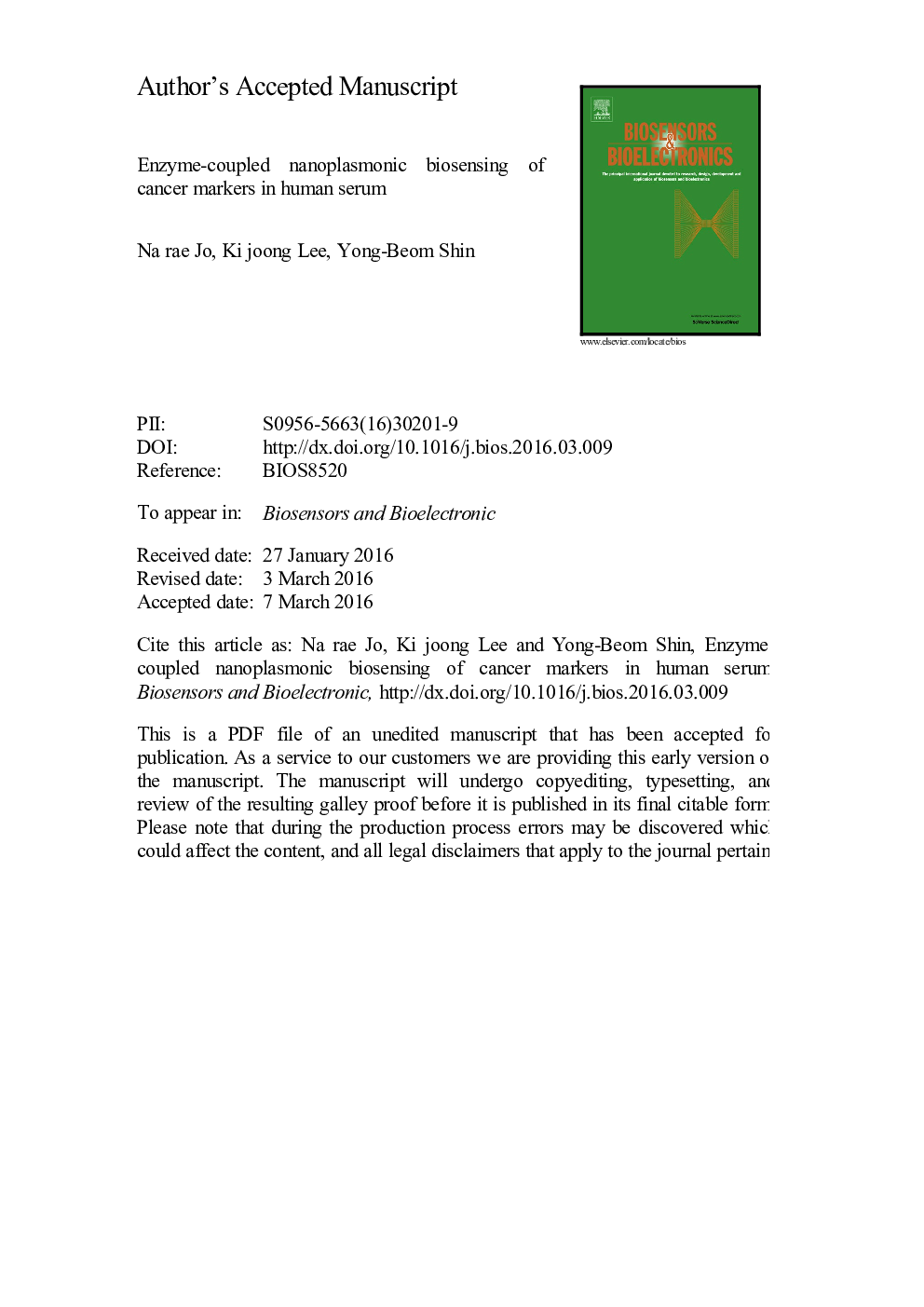| Article ID | Journal | Published Year | Pages | File Type |
|---|---|---|---|---|
| 7230604 | Biosensors and Bioelectronics | 2016 | 34 Pages |
Abstract
As the use of biosensors for early in-vitro diagnosis of malignant diseases has expanded, issues associated with ultra-sensitivity and wide dynamic range have become paramount. In this study, we designed a sub-zeptomolar sensor for detecting the alpha-feto protein (AFP) that utilizes localized surface plasmon resonance (LSPR) assisted by bio-catalytic reaction and a self-controlled detection scheme. A gold nanodot array (GNA), serving as a plasmonic material, was fabricated using an improved UV nanoimprint lithography (NIL) method that employs a sacrificial layer. In the new approach, LSPR observation is highly stable because it employs a back reflection mode, which avoids passing the signal through the sample solution. An enzyme-precipitation reaction was conducted on the AFP antigen-antibody complex on the surface of the gold nanodot (nano-ELISA) using a procedure that was described previously. To extend the AFP detection limit below femtomolar concentrations, a scheme involving self-controlled detection was employed to lower the limit. In this method, the sample including the target simultaneously plays the role of both sample and negative control. Using this scheme, AFP can be detected at concentrations as low as 14 aM (0.7 zeptomole in 50 μL serum) and with the wide dynamic range of 10 fg mLâ1-10 ng mLâ1. Importantly, the new method provides a platform for studying and monitoring interactions between biochemically active substances that are present in very low concentrations. Finally, the general strategy used to design the detection method can be easily adapted to the ultra-sensitive detection of other biomarkers and pathogens.
Related Topics
Physical Sciences and Engineering
Chemistry
Analytical Chemistry
Authors
Na rae Jo, Ki joong Lee, Yong-Beom Shin,
